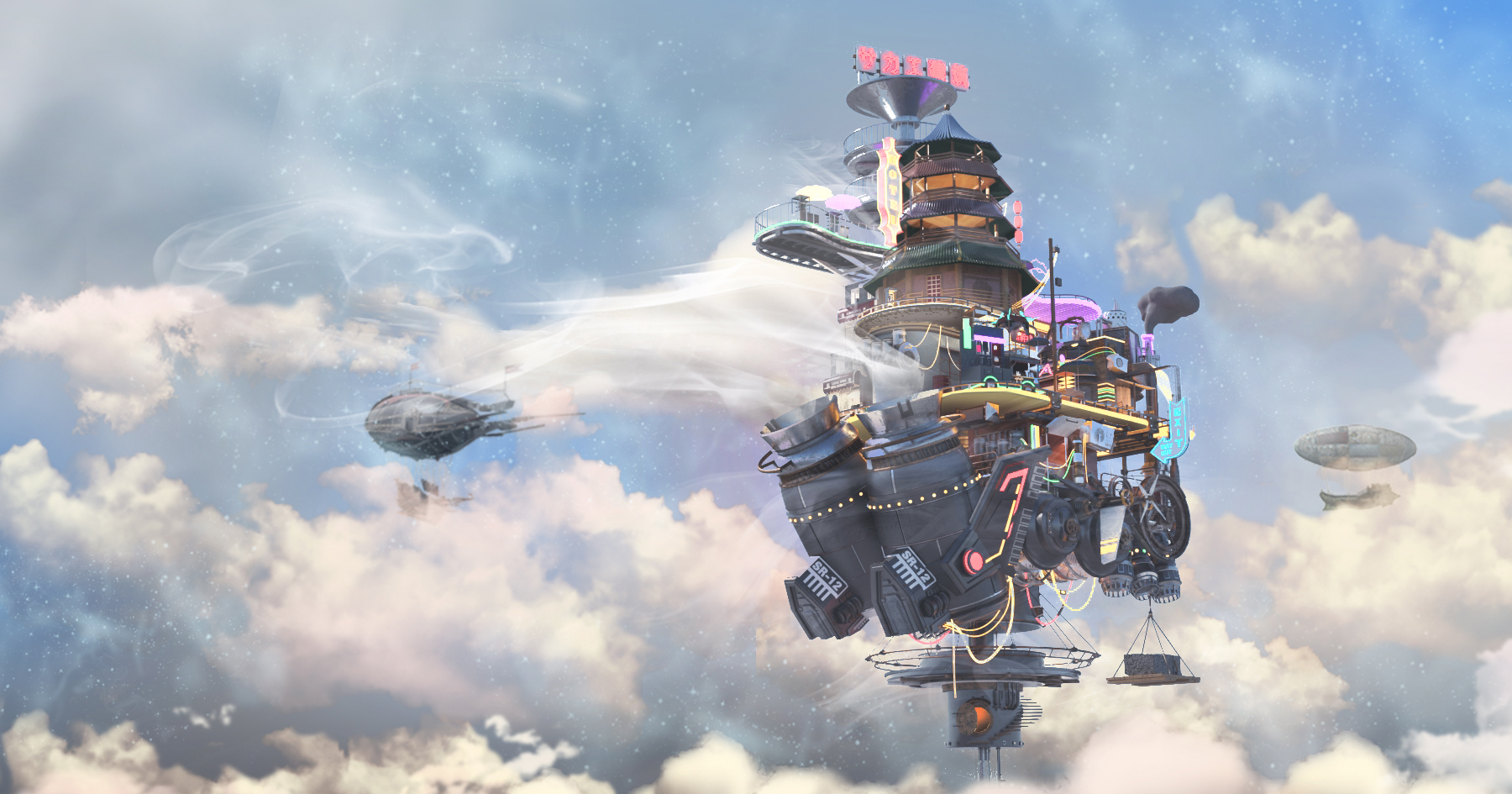We are thrilled to announce the winners of Architizer's inaugural Vision Awards, the world’s biggest awards program dedicated to the art of architectural representation. Sign up to receive future program updates >
Renderings are more than simple computer-generated images; they tell a story and help us envision how a space feels, is used and interacts within the surrounding environment. Architizer’s annual Rendering Competition the inspiring and striking architectural ideas made possible by architectural visualization. This rendering challenge provides designers with an opportunity to showcase their individual talents and distinctive imaginations.
At its best, ArchViz allows designers to explore the expansive potentiality of what architecture can be through surreal imageries that engage with the absurd, the paradoxical, and escapism. Each of the eight renderings offers a dreamlike vision. Whether it be an idyllic setting, a fascinating paradox, or a dream-like scene, each rendering highlights the fantastical possibilities of bold utopic environments and pushes the boundaries of what an architectural rendering can be — a chance to escape reality.
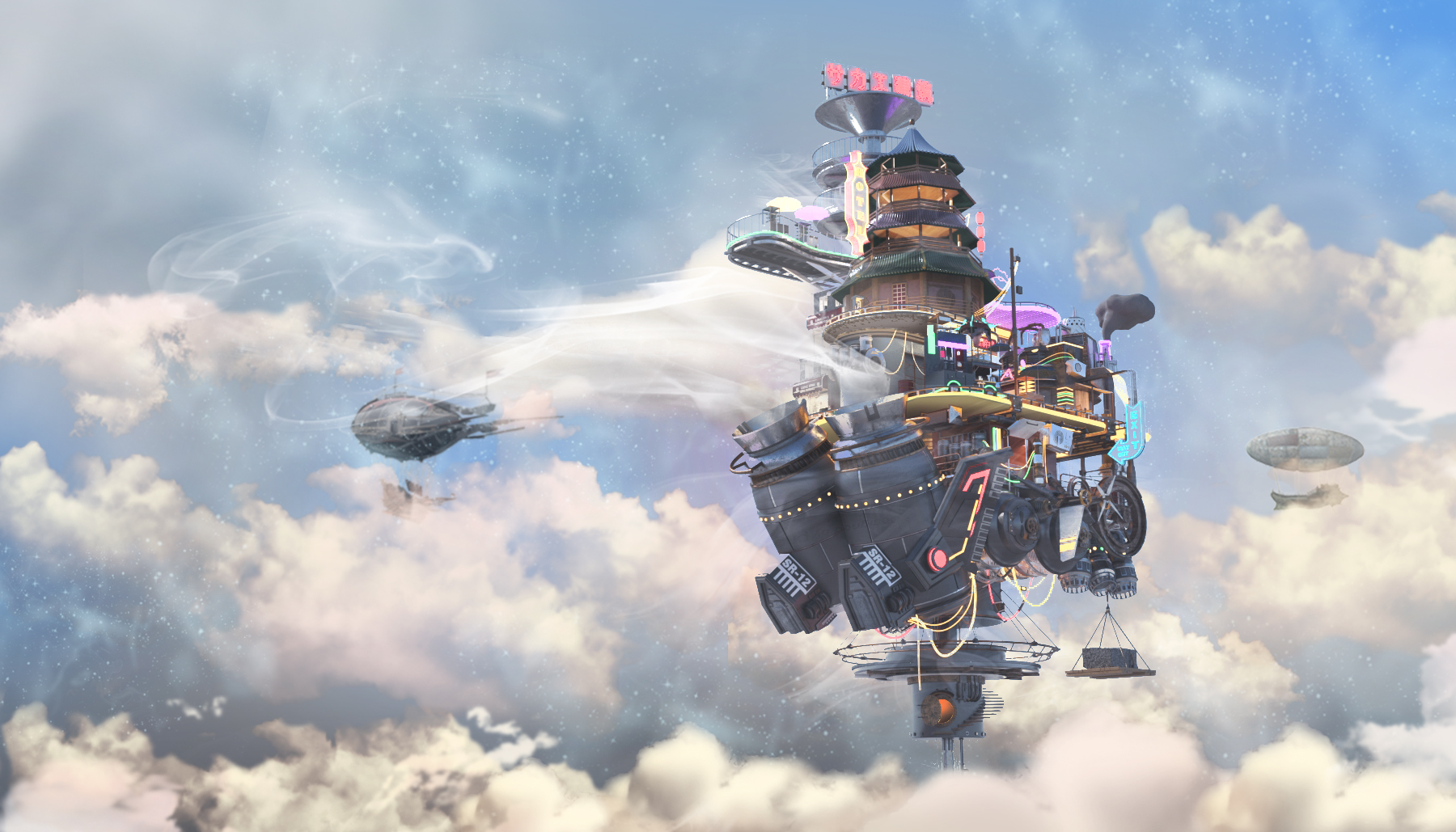 Floating Vestiges by Timlok Li
Floating Vestiges by Timlok Li
Timlok Li’s rendering takes the viewer off-ground and into the sky. His rendering challenges the notion of architecture as permanent and site-specific, encouraging us to engage in the idea of impermanence. Floating Vestiges is hard to categorize as it flees from a defined architectural style. Instead, it embraces various styles and practices from different eras and periods. From American roadside architecture to imperial China, this floating structure is an amalgamation of historical periods and thus creates an inviting space for all walks of life.
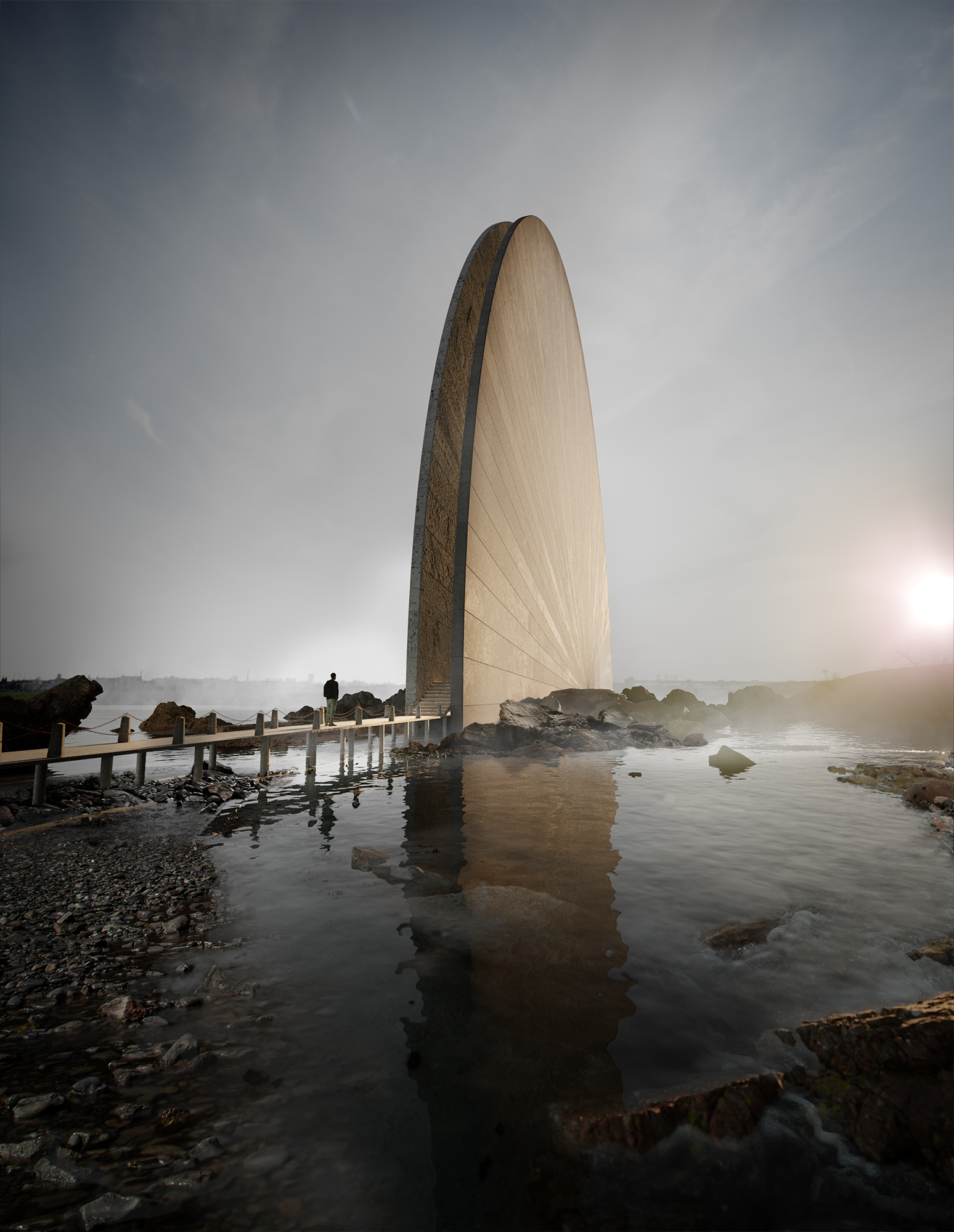 The House of the Rising Sun by Bogdan Begmat
The House of the Rising Sun by Bogdan Begmat
Bogdan Begmat’s paradoxical rendering is seemingly warm as it is brutalist. Made of poured concrete, this monolithic design boasts a warm brutalist aesthetic with a reflective façade. The rounded structure is at once muted through its monochrome appearance and, yet, defiant as it stands tall within the skyline. The building reflects onto the water surface below in what amounts to an almost subliminal effect. The juxtaposition of harsh and warm effects speaks to a surrealist aesthetic. Still, with the help of the surrounding peaceful landscape, a warm and inviting atmosphere is imagined.
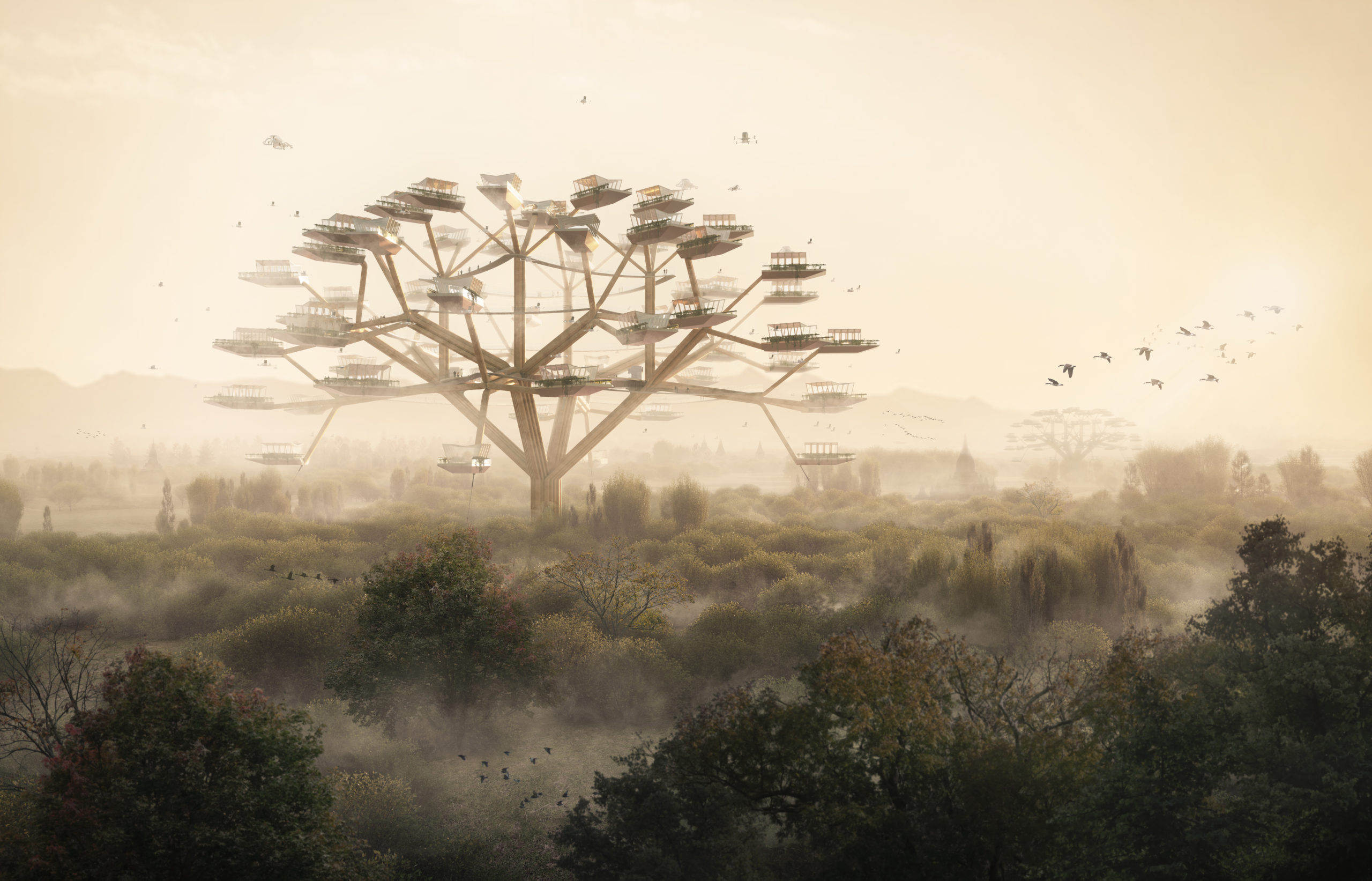 Joint Structures by Nash Hurley, Jean-Pierre Monclin and Sonja Guth
Joint Structures by Nash Hurley, Jean-Pierre Monclin and Sonja Guth
A collaborative effort by three architects produces a rendering that responds to society’s ever-changing work culture. Remote work currently dominates over the traditional office space, and this change has required designers to pivot and evolve their practices. This rendered design concept imagines a healthy, functional, and environmentally-conscious workspace. It consists of a skyscraper made of a cluster of separate volumes, all of which are attached in a motif that creates a tree-like design. The workspaces within the structure offer ample daylight and access to fresh air, which encourages good work habits and good health. Moreover, the separated volumes are ideal for small workgroups while equally remaining connected to the others and thus creating a sense of communal belonging.
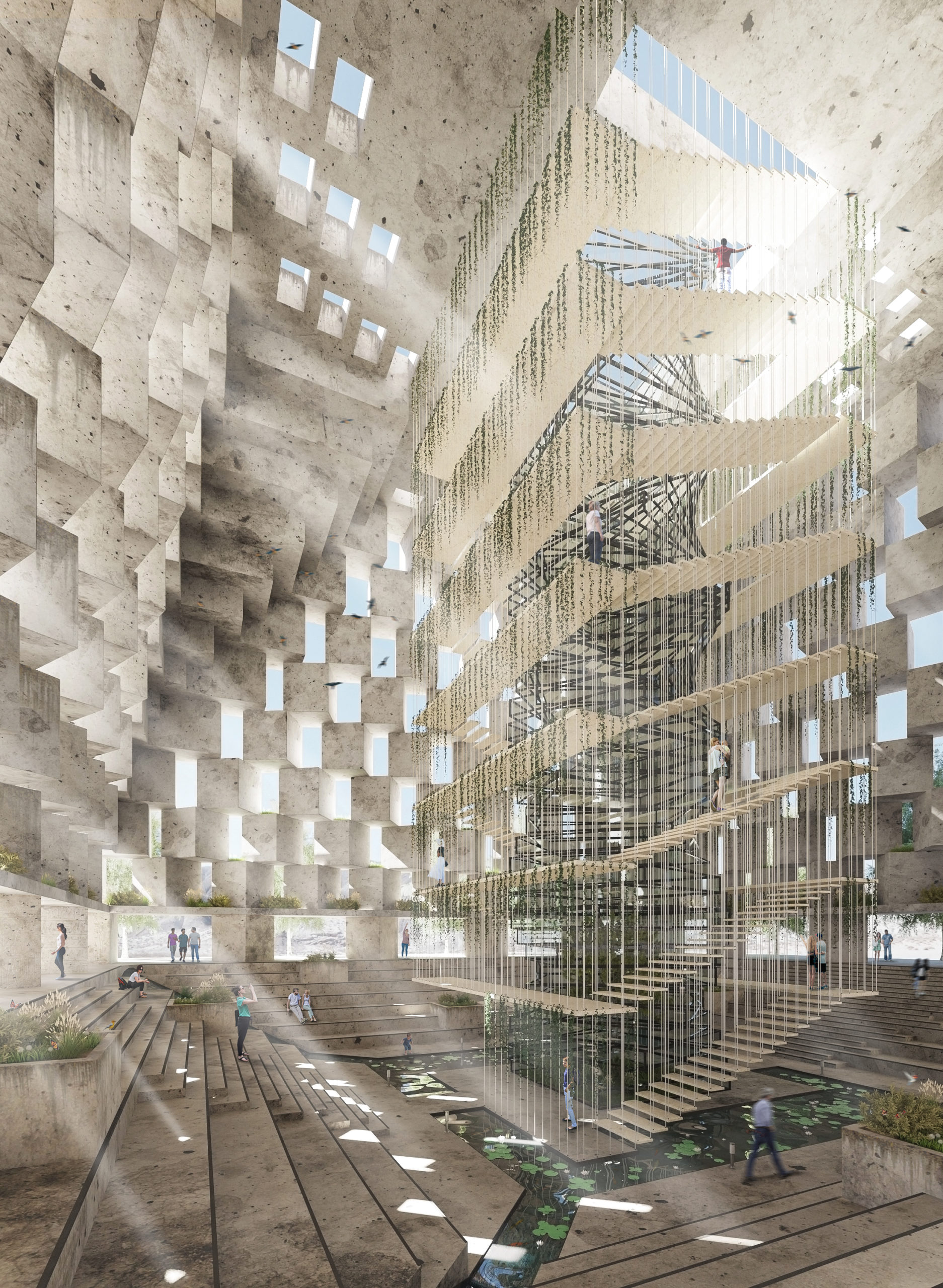 The Oasis by Nuno Salgueiro
The Oasis by Nuno Salgueiro
Nuno Salgueiro’s rendering features a pyramid within the middle of a desert and reveals a surreal and oxymoronic design. It employs the traditional tomb structure — a space once used to commemorate the dead — but instead designs an environment for the living. The Oasis is a structure that provides shelter, rest, and a chance to appreciate the surrounding desert topography. The interior is a light spectacle, a space where visitors can appreciate the radiating sunlight that shines through a series of intricately-cut openings. The focal point is the grand staircase, which leads guests to the top of the pyramid and where they can contemplate the surrounding desert landscape.
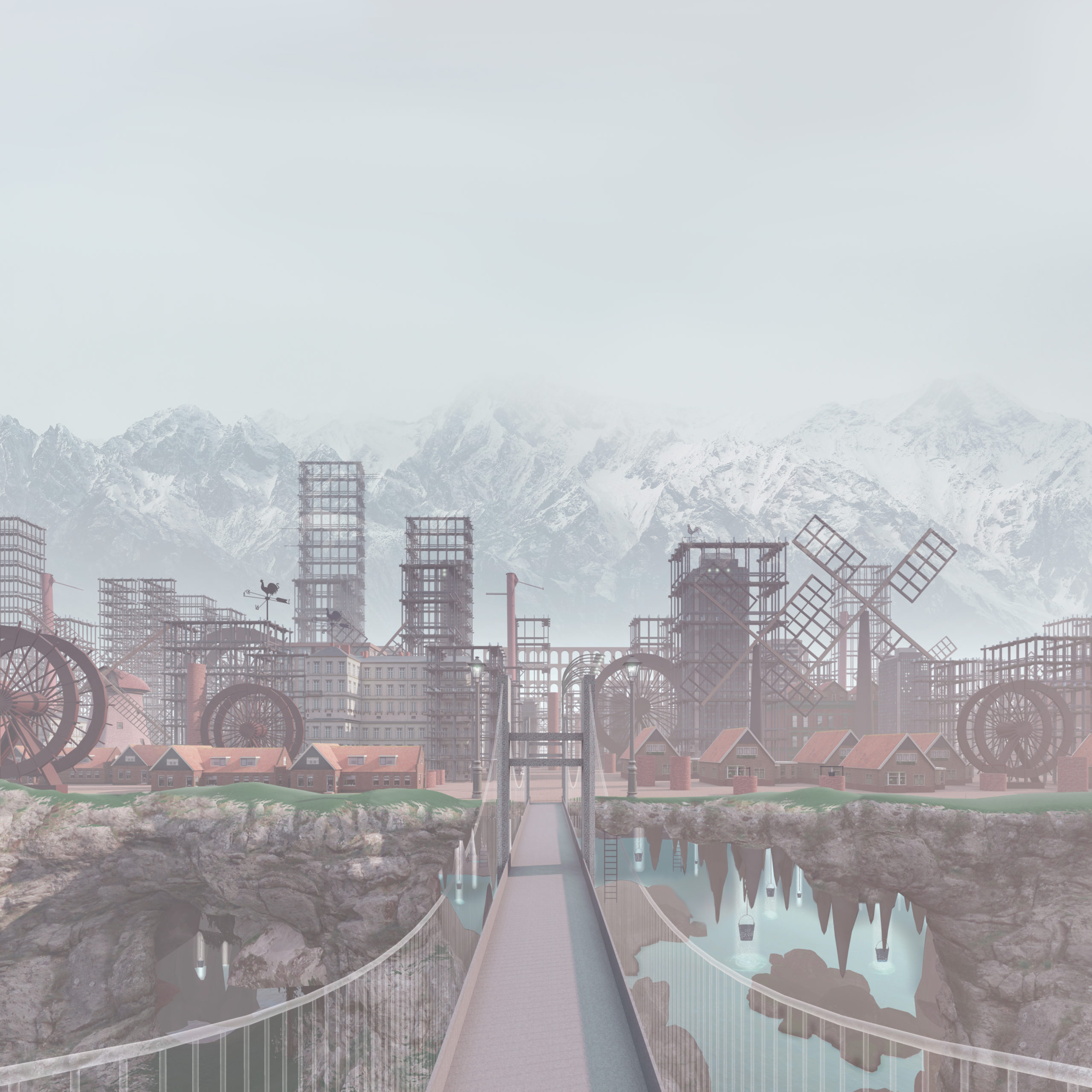 ISAURA, A city that moves entirely upward by Maria Karim
ISAURA, A city that moves entirely upward by Maria Karim
Maria Karim’s city design takes inspiration from the works of Italian writer Italo Calvino. His imaginative writing and description of cities influenced Karim to design ISAURA, a city that is oriented upwards. Karim’s city design is built above a subterranean like — just as Calvino describes it to be. The lake provides residents with fresh drinking water and also houses many of the city’s gods. This unconventional city organization speaks to Calvino’s vivid imagination and excites our surreal senses.
 The Crevasse by Yeong Joon Ko
The Crevasse by Yeong Joon Ko
Yeong Joon Ko’s light-filled gallery was intended for Hongik University in Seoul, South Korea. The space is cubic, boxy and exudes a tranquil morning atmosphere. A series of box-shape volumes were assembled in such a way that creates an arched path that leads visitors to a public space below. A sequence of crevasses and cut-outs connect the space with the outdoors and allows streams of sunshine to brighten the interior space. The rectangular shapes work together with the soft beams of lights to create a calm and warm gallery space.
 Enter the Garden by Zana Bamarni
Enter the Garden by Zana Bamarni
Zana Bamarni’s rendering invites the viewer to a light-filled haven. Enter the Garden is designed to be a tranquil space where for those in need to escape their chaotic and often frustrating work lives. The structure consists of a rounded archway that is deeply ornamented and stands with grandeur. Shining through the archway is a radiating, almost blinding light. What lies beyond the archway is unknown, but the fierce light and large scale create a sense of mystery and a deep urge to explore what may be lying ahead.
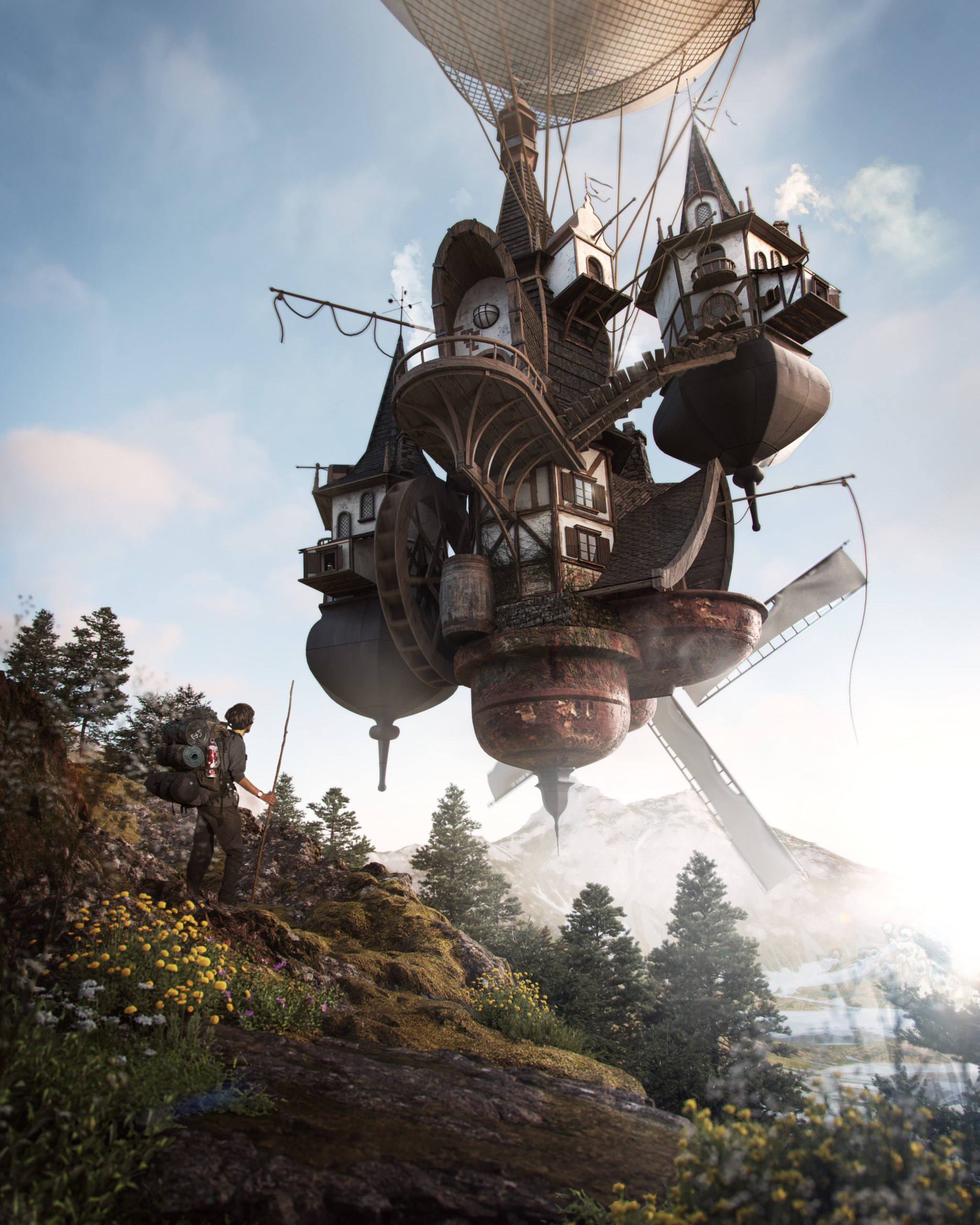 Solivagant No More by Joe Parayno
Solivagant No More by Joe Parayno
Joe Parayno rendering embodies the widely-felt fear of the pandemic, the intense fatigue of isolation and the desperate desire to travel. This design consists of a home hitched on a giant balloon, which allows the structure to fly freely in the sky. This illustrative rendering depicts a hiker who comes across the flying house and joins the owner of the home on a traveling adventure. Both individuals connected over their shared urgency to travel and see the world. The home is a surreal take on the human necessity for freedom and mobility.
We are thrilled to announce the winners of Architizer's inaugural Vision Awards, the world’s biggest awards program dedicated to the art of architectural representation. Sign up to receive future program updates >
